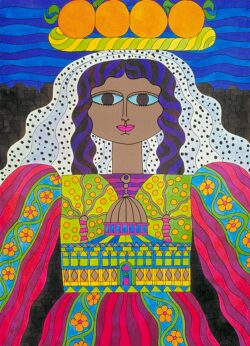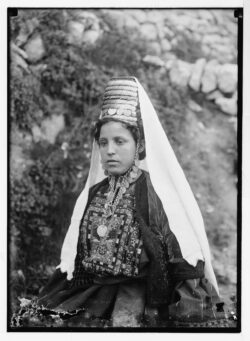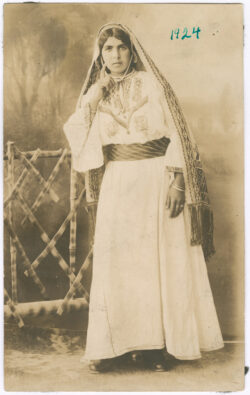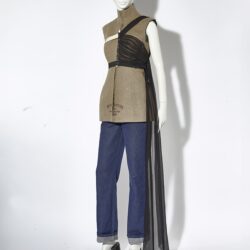Embroidering Palestine

MoMu explores Palestinian embroidery and dress through the lenses of nature, splendour, power and change.
Visitor information
Tickets
Visitor information
Description of the exhibition
Embroidery, called tatreez in Arabic, is the most important cultural practice of Palestine. Historically, Palestinian fashion was defined by diversity, with every region known for distinct textiles, styles and stitchwork. More than a craft, tatreez in the nineteenth and early twentieth centuries was a visual language shared by women, as embroidery reflected its maker’s identity and origins.
Dig deeper
This exhibition explores Palestinian embroidery and dress through the lenses of nature, splendour, power and change. Tatreez was a rural craft, embedded in women’s relationship to nature – from motifs inspired by Palestinian flora, to fabrics dyed with indigo grown in the Galilee. At the same time, the splendour of embroidery attested to women’s wealth and status. The wedding was a vital rite of passage, with sumptuous clothing a key element of celebrations. Golden thread, mother-of-pearl shoes, and elaborate headdresses offer a spectacular glimpse of local craftsmanship. Silver jewellery, along with certain tatreez motifs, also held talismanic significance, reflecting the power of clothing to affect and protect the body.

Today, embroidery’s power lies in its connection to Palestinian identity, as a symbol of resistance and solidarity. Since the Nakba, or catastrophe, of 1948, which refers to the mass displacement and dispossession of hundreds of thousands of Palestinians, and the establishment of the state of Israel, tatreez has become a form of cultural resistance, an assertion of identity. The exhibition traces the politicisation of the craft, the role of textiles in the assertion of identity, and the continued inspiration tatreez provides to Palestinian fashion designers in the present.

The exhibition brings together important objects on loan from the Musée du Quai Branly – Jacques Chirac in Paris, the Textile Research Centre in Leiden, and the Wereldmuseum in the Netherlands. Weaving together the historical and the contemporary, the show celebrates the rich cultural heritage of Palestine’s past alongside the designers shaping its future – including work by Ayham Hassan, GmbH, Reemami, Studio Nazzal and Zeid Hijazi.
Exhibition under the lead of
Guest curator: Rachel Dedman
Graphic design: Marie Sledsens
Production: Marie Vandecasteele
Campaign image: Jerusalem Is In the Heart, 1977, Helmi El-Touni. Edited by Dar Al-Fata Al-Arabi, Caïro. Source: Palestine Poster Project Archives
Schools
Planning a school visit? Book a guided tour and discover this exhibition with a guide. We offer tailored formulas for different school levels.
Groups
Interested in a group visit? Book a guided tour and discover this exhibition with a guide on the day and time of your choice.



